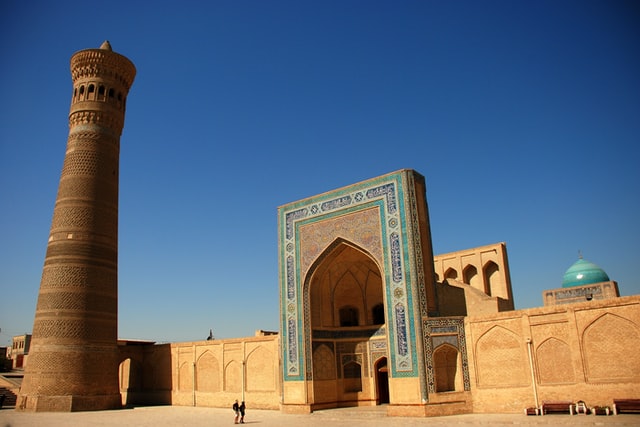BUKHARA

Click to return to previous city…. SAMARKAND
Bukhara was founded over 2000 years ago, and has always been a hub for travellers and traders. It is situated in the Zerafshan River delta in Central Uzbekistan. Given its location, it sits on a crossroads of ancient trade routes that stretched across Central Asia. As Dunhuang, it borders sand deserts, one called Kyzyl Kum (Red Sand) and Kara Kum (Black Sand). It was extremely prosperous throughout the Middle Ages, and as many such strategically located cities, a centre for culture, scholarship and religious studies. After the Arab conquest in 709 AD, Bukhara became a major cultural and religious centre. The height of Bukhara’s importance was reached in the 15th and 1 6th centuries. In 1370 it became part of the Timurid Empire. As it was such an important cultural and religious centre, Muslims from a great number of countries and regions brought with them the cultural values that made Bukhara such an importance city. With its great religious importance it acquired the name of “Bukhoro Sharif” meaning Noble Bukhara.
Traded items:
It was famous for its textile industry, Karakul lamb’s fleece, silk, cotton, leather, carpets and clothing. Further items included gold embroidery and metal work.
Click to proceed to next city…. ISFAHAN
A VERY SHORT READING LIST FOR THE SILK ROAD (AND BOOKS USED FOR THE WEBSITE) 11/12/2020
- “Lords of the Horizons – A History of the Ottoman Empire”, by Jason Goodwin. Vintage. 1998
- “The Silk Road – A New History”, by Valerie Hansen. OUP 2012
- “Introduction to Byzantium, 602 -1453”, by Jonathan Harris. Routledge. 2020
- “The Silk Road – A very short Introduction”, by James A. Millward. OUP. 2013
- SERKIS, Christiane. Des Fondateurs de Religions; de certaines langues antiques. Lausanne 2020 Article inédit.
- “Life Along the Silk Road”, by Susan Whitfield. UCal Press 2015
- “Silk Roads – Peoples, Cultures, Landscapes”, Edited by Susan Whitfield. Thames and Hudson. 2019
- www.ChinaHighlights.com/silkroad/history
Tap Star image below to select
next location.

